Memorial Grounds
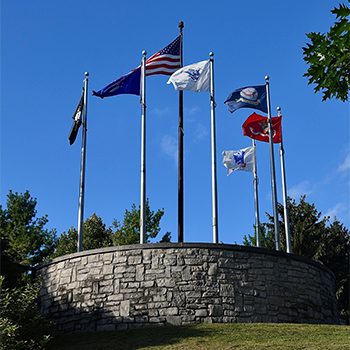
Overlook
Flag Poles – From Highland Avenue or South Avenue, you first notice the flagpoles. There are seven in all, five representing the various branches of the armed forces, one for the POW/MIA flag, and the American Flag flying high above the rest. The five service flags are flown in the order of priority in the military; the insignias that are set in the floor below the flags are in order of creation of the different branches of service.
Map of globe at base of American Flag – The floor plan is of black granite, a large world map in relief that highlights the United States and Vietnam. The physical distance and lack of obvious connection between the two lands are hard to miss. Your feet and your eyes now create a connection between the world etched in the floor plan, the immediate surroundings of Greater Rochester, and the individual soldiers memorialized in this place.
Topography – The topography and the vista remind them of Vietnam, of the hilltops where they used to wait for the choppers to take them out of battle. The two acres of memorial have been sculpted to create land-forms typical of rural Vietnam.
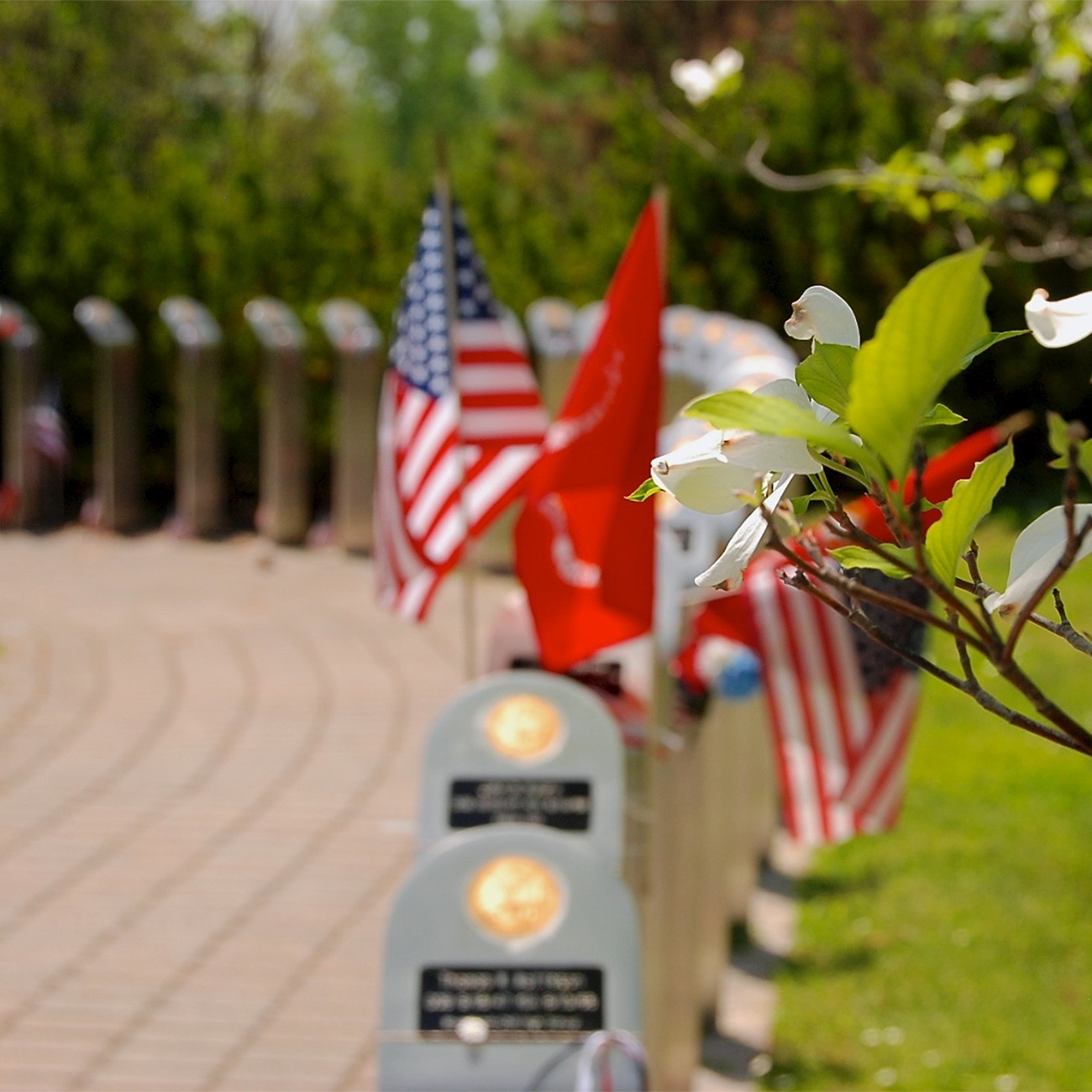
Walk of Honor
280 Bollards make up the Walk of Honor, underfoot are brick pavers. The focus of the walk is on your right, a single-file line of identical bollards, seemingly endless, running along the Walk’s edge and curving ahead out of sight. Each bollard is made of brushed stainless steel, “America’s metal,” and each represents a Rochester-area soldier, killed or missing in action in the Vietnam War. Each bollard bears two small plaques: one, an insignia of the soldier’s military branch; the other bearing the soldier’s name, date of birth, date of death or disappearance, and high school. The bollards are sequenced chronologically according to the final day in the life of each soldier.
They resemble human figures, but your own interpretation determines their posture; they trudge forward, heads down, under the weight of what they carry; or they stand erect, heads tipped back, faces turned up towards the sun. You still must bow your head as you read each name. Tag on the back of bollard is the Bollard sponsor(s).
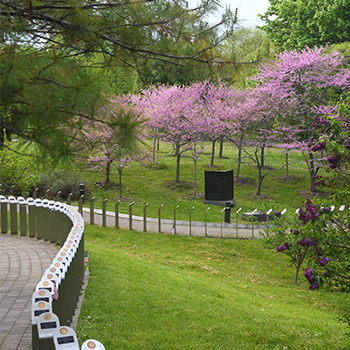
Medal of Honor Grove
Along the path is the Medal of Honor Grove, dedicated to all Vietnam-era service people who received the country’s highest military award, the Congressional Medal of Honor. Here, black granite again recalls the Wall in Washington, D.C. and points to a bollard directly across the path: William T. Perkins, Jr., Medal of Honor recipient, KIA 10/12/1967.
The Grove has 23 American red-bud trees commemorating the 23 Medal of Honor recipients from New York State.
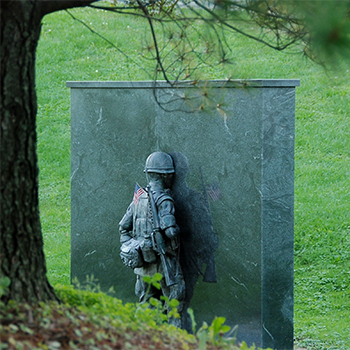
Veterans Garden
The Veterans Garden has the sculpture of the soldier walking into a black granite wall, walking through time from past to now. The wall is polished to a high reflection, incorporating into the memorial the mirror image of the living. There is a gap in the line of bollards: the design committee specified that the sculpture be accessible; veterans and families of lost soldiers would want to touch the sculpture and to catch their own reflection in the wall. This is a place of connection between the living and the dead.
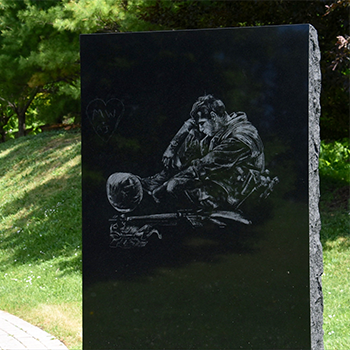
Garden of Reflection
A place to sit, think and reflect – Here, you are given a challenge, engraved on stone markers: “In the spirit of America, seize this place and this moment to commemorate, to educate, to heal, and to remember all who have served, now serve, and will serve this great country. The path brings you back to the Overlook, which now serves as an end point to your journey, a place of reflection and review.
Related Sites:
